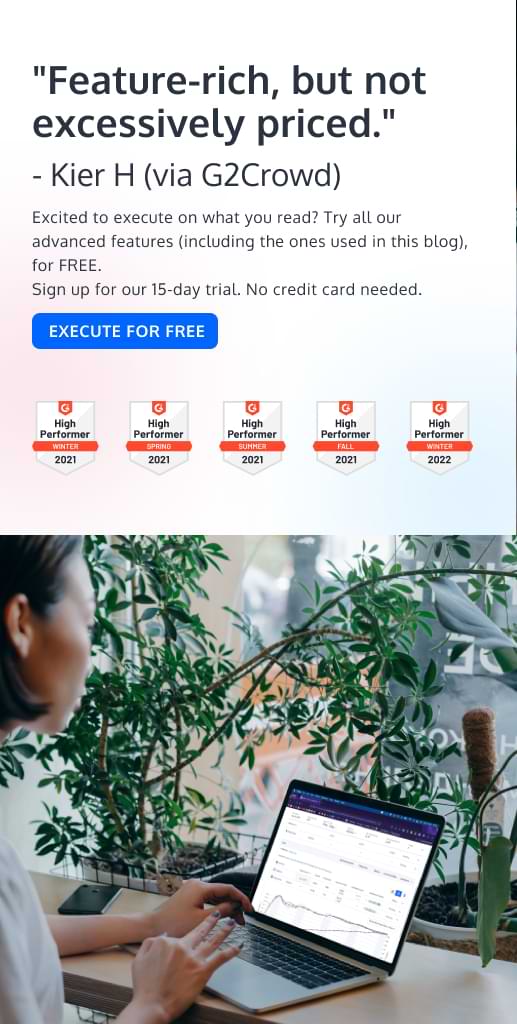How to Approach Website Optimization in 2025
Website optimization used to mean improving page load times, fixing broken links, and adding meta descriptions. While those elements still matter, performance optimization in 2025 requires a deeper understanding of user intent and friction—even if users never visit your site.
Beyond technical repairs and keyword research, your website should be a direct response to the question, “Is this exactly what our users expect to find when they land?”
This answer doesn’t lie in bounce rates or other surface-level digital marketing metrics. Instead, true optimization depends on how well you understand your target audience’s pain points and how well your site experience aligns with their intent. That alignment is also what matters as post-Google search patterns like AI search and artificial intelligence optimization (AIO) become increasingly prevalent.
If you’re looking to go beyond traditional SEO checklists, you’re not alone. With the right optimization strategies and tools, you can improve your optimization efforts and guide your visitors where you want them to go.
What Is Website Optimization?
Website optimization is the process of continually improving your website’s performance to increase its visibility, usability, and conversion capability. Today, this means adapting to evolving search engine algorithms, respecting user privacy, and aligning experiences with real user intent.
To stand out in crowded markets, you can use website optimization tools that support automated experiments and predictive testing. These tools reduce guesswork and risk, making it easier to iterate quickly and deliver experiences that meet user needs and business goals.
Why Website Optimization Matters in 2025
Website optimization looks different in 2025. As technology and user behavior evolve, success now depends on how well your site aligns with user intent, supports ethical experimentation, and shows up across both traditional and AI-driven search experiences.
According to research by Semrush, traffic from AI search is projected to surpass traditional search traffic by 2028. This could happen sooner if the default Google search experience shifts to AI mode.
AI search engines process information differently than traditional search engines. AI focuses on understanding user intent and excels at comprehending content in context, which is important for generating summaries for the top of search engine results pages (SERPs).
Even if your current content ranks well for relevant keywords, it may not provide the clear, quick, and concise answers that AI search engines are looking for. To stay competitive, you’ll need to optimize your site for current search trends.
From Page Speed to Person-First Optimization
Traditional website optimization tactics—such as on-page SEO, website speed, and technical SEO—still provide a foundation for website performance, but they’re no longer enough on their own. Today, you can optimize your site in more targeted, personalized ways for an even better user experience.
Collecting first-party data lets you see browsing history and purchase behavior, while zero-party data helps fill in the gaps with information users submit voluntarily through surveys, quizzes, and other methods.
By combining both types of data, you can uncover deep insights into customer behavior and preferences to refine audience targeting, deliver more relevant content, and guide users through your site.
AI-enhanced tools make it easier to process large amounts of data, so you can identify user insights faster. Using consent-driven personalization can also build trust with consumers who are increasingly skeptical about how their information is being tracked and used.
Website Optimization Is Actionable Experimentation
Website optimization is no longer a siloed driver of ROI. It’s the output of experimentation. Your optimization process should rely on data rather than guesswork, and experimentation is a low-risk way to collect that data.
To run effective tests across your growth channels, follow the experimentation flywheel model:
- Hypothesize: Formulate an educated and data-driven prediction that changing a specific site element (your call to action, messaging, design, etc.) will improve the result you want to achieve.
- Test: Choose the most appropriate type of test (A/B testing, multivariate testing, etc.), and run it for its full duration.
- Learn: Analyze the findings to determine whether your hypothesis was correct and whether the change had more or less impact than expected.
- Optimize: Use what you learn to make improvements or design additional experiments to get the info you still need.
When choosing your measurements for each test, prioritize long-term KPIs rather than vanity metrics like website traffic and page views. You can measure customer lifetime value (CLTV), micro-conversions, or business impact through metrics like ROI.
Don’t overlook the importance of ethical testing. Building user trust through transparency and respect is the foundation for sustainable growth.
11 Website Optimization Strategies to Capture and Keep Visitors
There are two main pieces to consider when it comes to website optimization:
- How your customers find you
- The experience you give them once they land there
You want to increase traffic, but you also want to get visitors to stick around once you’ve reeled them in. Here are some strategies you can use in both phases of your website optimization project to create a seamless user experience.
Help Your Customers Find You
Making your site more visible involves optimizing it for AI search, user intent, natural language, and more. Use these five tips to bring in a larger, more relevant crowd.
1. Use Intent-Driven SEO as a CRO Lever
As SEO becomes increasingly intent-focused, it’s turning into a more collaborative partner for conversion rate optimization (CRO). While the two used to work in silos, you can no longer use one without the other.
SEO brings in more qualified traffic, and CRO turns that traffic into results. It’s important to leverage both to achieve optimal impact.
2. Structure Your Site for LLM and AI Search Visibility
AI search isn’t just changing how brands optimize their websites—it’s also transforming the way users search.
AI-first search behavior is on the rise due to generative AI tools like ChatGPT, Perplexity, and Google SGE. As a result, searches are becoming more conversational and personalized, with users expecting instant, clear answers.
Search sessions are also growing shorter, with many evolving into no-click searches. That’s because AI summaries now show up at the top of SERPs and answer questions without users needing to click into content.
So, how do you get your site content to show up in Google’s AI Overview or another LLM search? The first step is to structure your site so that large language models (LLMs) can easily access and understand it. Use logical headings and subheads, semantic HTML to define content purpose, and descriptive titles and captions for multimedia.
Creating content that reflects how people naturally speak and search can also increase the likelihood of search engines ranking your pages. Make sure your writing flows smoothly and is easy to understand.
AI tools were created to help humans, which is why AI prioritizes content that genuinely serves your audience. Always write as if you’re explaining something to a friend—which includes not being overly promotional.
3. Build Site Authority Through Backlinks
A strong backlink strategy helps you build credibility and trustworthiness in the eyes of search engines. It signals that your content is helpful enough to be referenced as a source of information by other sites.
A few key steps for creating a backlink strategy include:
- Keyword research: Long-tail keywords tend to be less competitive than short-tail keywords, which makes it easier to rank for them.
- Competitor analysis: Identify which posts and sites are currently ranking for your target keyword and note any patterns.
- Content creation: Develop high-quality content that either goes beyond current ranking articles or takes a completely new angle to add to the conversation. Optimize for search intent and on-page SEO.
Creating unique and informative content that isn’t already covered by other top-ranking articles is a great way to get readers to use your content as an original source.
4. Keep Your Content Fresh and Up to Date
Regularly updating your website content signals to search engines that your site is active and current, which makes it appear as a valuable resource. This can lead to higher search rankings.
A few ways you can update your existing content include:
- Adding new keywords
- Updating stats by linking to more recent studies
- Rewriting the intro and conclusion
- Including visuals
- Incorporating new information
- Restructuring the content for easier reading (e.g., adding bulleted lists to break up long blocks of text)
Create a Website Experience That Delights Users
Once you’ve built a comprehensive search strategy, it’s time to focus on your user experience. Here are a few tips to help make your site as frictionless as possible for your visitors.
5. Conduct a Research-Backed Funnel Friction Analysis
Identify where users encounter friction as they move through your site. This could include a confusing navigation panel, a lack of clear CTAs, or a site that isn’t mobile-friendly.
By pinpointing where users are dropping off, you can optimize your user experience to improve conversion rates.
6. Implement Consent-Driven Personalization with AI
Use zero-party data to drive personalized web experiences. You can also implement an AI chatbot on your website to collect zero-party insights. This is a great way to ethically collect information without encroaching on anyone’s privacy.
Users today care about their data privacy—including what’s being collected, how it’s being used, and who it’s being shared with.
To collect data responsibly, be up front from the start. Let users know what you’re collecting, why you need it, and how you’ll protect it. Focus on capturing first-party data, since it’s collected directly through your website and it provides the most relevant insights into your customers’ journey. As long as you are transparent and get explicit permission, this approach is both ethical and effective.
Convert supports compliant, privacy-first experimentation, so you don’t have to worry about maintaining privacy compliance.
7. Prioritize High-Impact Test Ideas
You’ll always have things to test on your website, but not all experiments offer the same potential impact to your user experience or your business. To get the most value out of your experiments, prioritize tests like:
- Lead magnet opt-ins: Experiment with CTA copy and placement based on the referring source. Avoid dark patterns and focus on value clarity.
- Form fields: Use A/B testing to test whether a shorter submission form leads to more conversions
- Animation: Add simple animations to your website to see whether they increase engagement depth.
8. Rethink UX Performance Optimizations
While site speed and link building are still ranking factors, those traditional elements are now secondary to each visitor’s overall experience. Focus instead on creating high-quality content, hyper-personalization via AI, and an intuitive navigation experience through a visual hierarchy.
9. Refine Mobile Site Experiences
In the last quarter of 2024, mobile devices generated more than 60% of all web traffic worldwide. Thus, intentional, mobile-first website designs are more important now than ever.
You can no longer get away with a mobile version of your desktop site. Your user and page experience is just as crucial on mobile.
10. Don’t Overlook Accessibility Optimization
Making your website accessible to people with disabilities isn’t just the right thing to do—it’s also required. If your site isn’t compliant with the Americans with Disabilities Act (ADA) or the European Accessibility Act, you could face hefty fines and lawsuits. It also impacts your SEO, as many SEO best practices are consistent with digital accessibility practices.
11. Define Success Metrics Beyond Conversions
Because optimization experiments aim for long-term results, make sure your metrics are also sustainable. Rather than tracking basic engagements, look at engagement depth. Dive deeper into details like:
- Time spent on page
- Scroll depth
- Content interactions
- Return rate
This way, you’ll understand whether visitors are paying attention when they arrive and how they’re navigating through your site.
When you’re analyzing results, be sure to communicate wins that align with business value. Stakeholders care about long-term impact, so translate your findings into language that reflects ROI, customer impact, or growth opportunities.
Because optimization is an ongoing process, using consistent success metrics over time helps you build momentum and unlock compounding results.
Top Website Optimization Tools
You may know website optimization is critical but feel unsure of where to start. If that’s the case, check out some of the most popular optimization tools below, broken down into categories.
SEO Tools
SEO tools help you optimize your website for traditional and AI-powered search engines. Have you ever asked yourself, “How many of our website visitors are finding us through organic search?” These tools can help answer your question.
Popular SEO tools include:
- Semrush
- Ahrefs
- Clearscope
- Yoast
- Screaming Frog
Speed and Performance Tools
Speed and performance tools help identify and optimize your website’s loading speed and responsiveness. If you’ve ever wondered, “Could my site speed be a factor in why visitors are quickly bouncing from my web pages?”, these tools can answer it.
Popular speed and performance tools include:
- Google PageSpeed Insights
- GA4
- GTmetrix
Experimentation Tools
Experimentation tools help you test different versions of your website and marketing strategies to see what works best. One type of question it can answer is, “How can I test page layout changes safely?”
Popular experimentation tools include:
- Convert
- Hotjar
- Optimizely
- AB Tasty
UX Tools
UX tools help you create the most user-friendly and effective website possible through user research and design. They help answer questions like, “How do I know if users are actually reading my content?”
Popular UX tools include:
- Figma
- UserTesting
- Sketch
- Proto.io
Behavioral Intent Tracking Tools
Behavioral intent tracking tools analyze user actions and collect data on their interests and potential buying behaviors. Have you found yourself asking, “How likely is it that this user will make a purchase?” These tools can help.
Popular behavioral intent tracking tools include:
- Fullstory
- Heap
- Bombora
Combine Experimentation and Optimization for Huge Impact
Website optimization best practices are constantly evolving, which makes ongoing experimentation key to staying ahead. A systematic approach to optimization and experimentation strategies creates a sustainable advantage that can drive impact across every growth channel.
But none of that matters without trust. Ethical testing isn’t just about compliance—it’s what makes optimization efforts stick. And trust is the basis for long-term customer relationships.
Convert provides the infrastructure and tools needed to run controlled, data-informed experiments that reveal key insights for website optimization. Its capabilities support a methodical approach to testing and personalization that aligns with evolving standards around user privacy, performance, and ethical data use.
Discover how Convert can help you move past ad hoc optimizations for long-term impact. Sign up for a free demo today.
Written By
Alex Birkett
Edited By
Carmen Apostu


